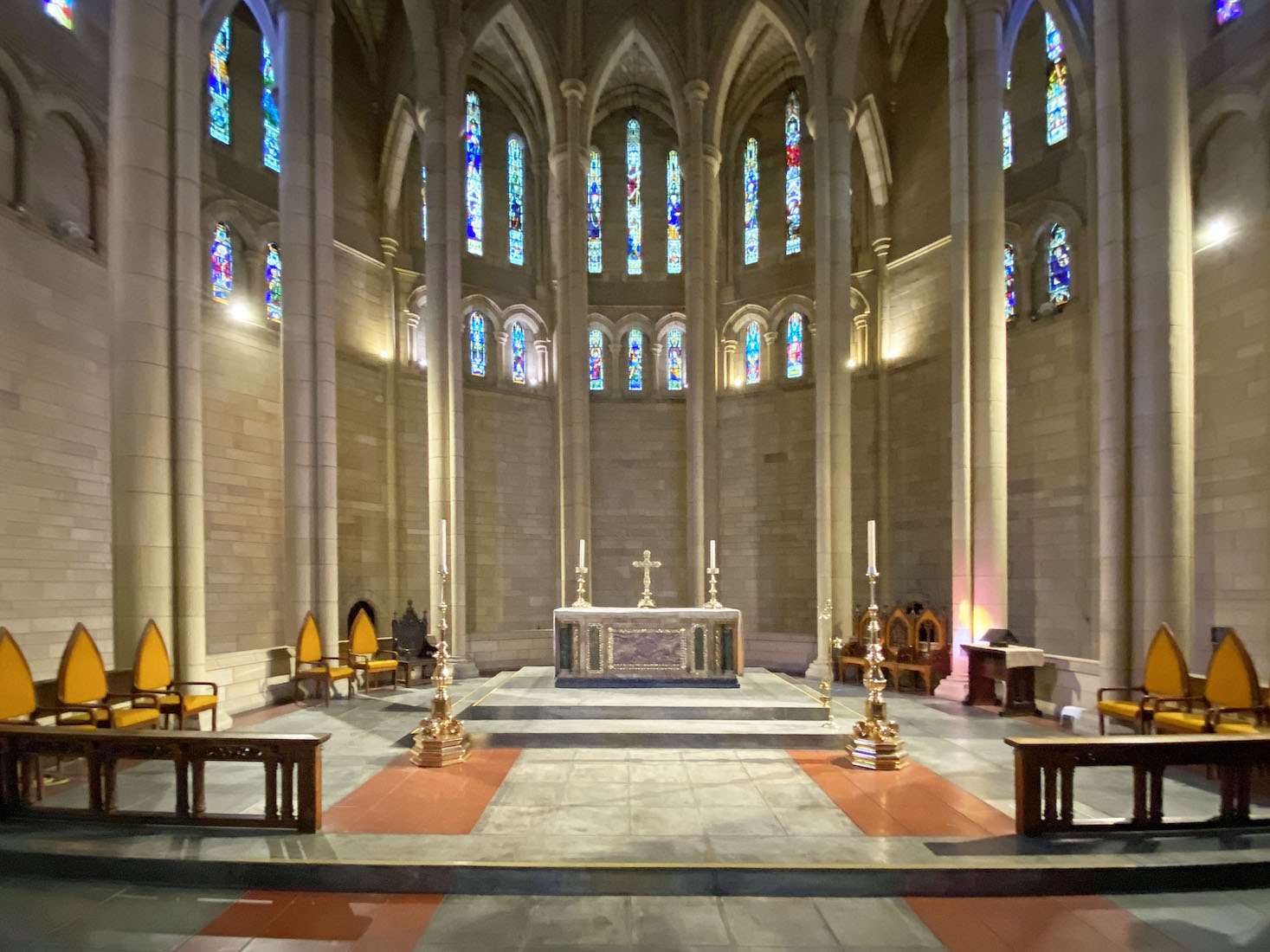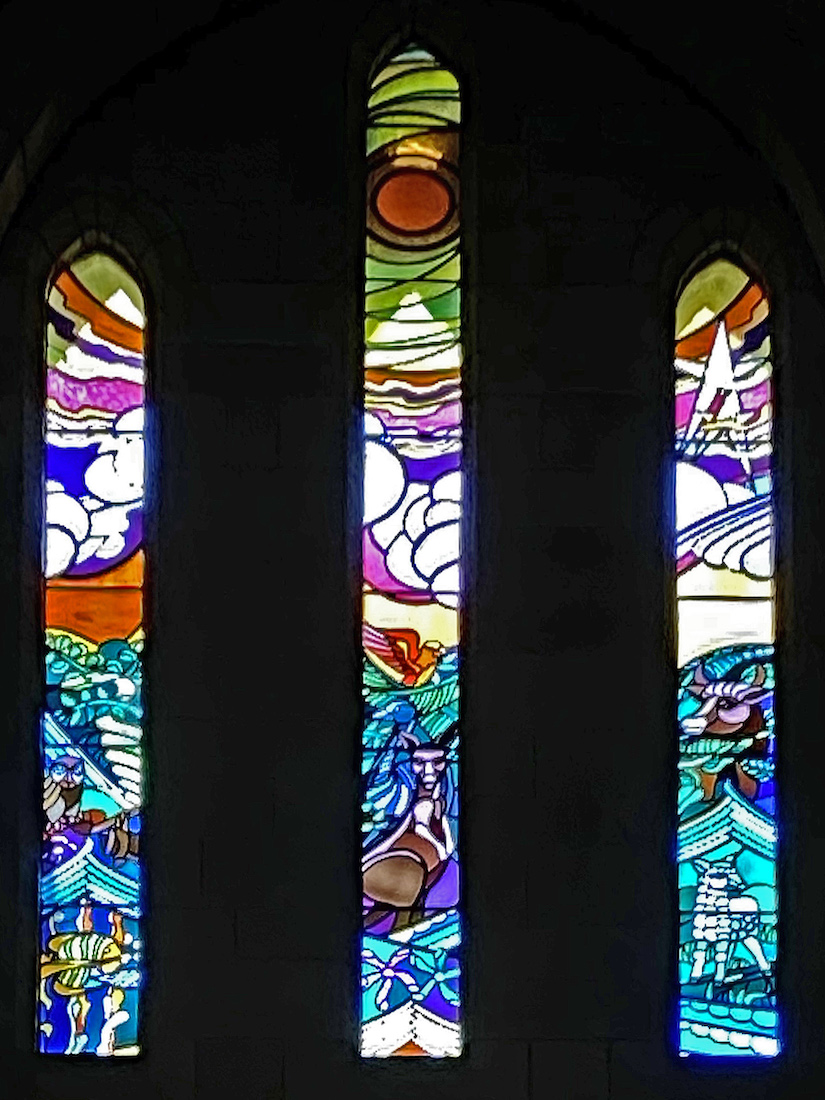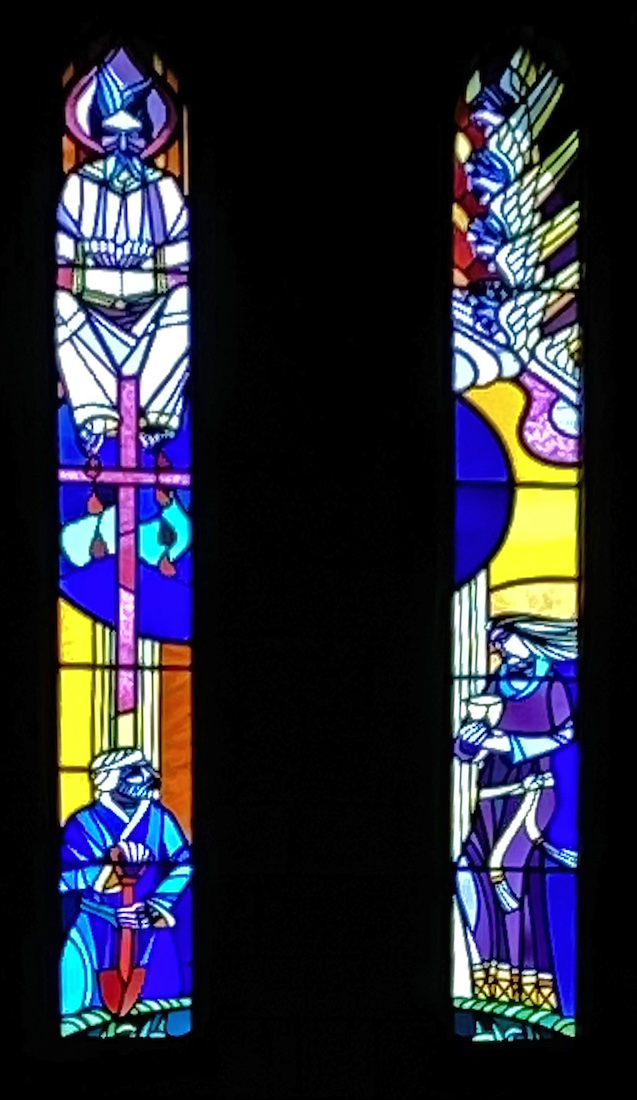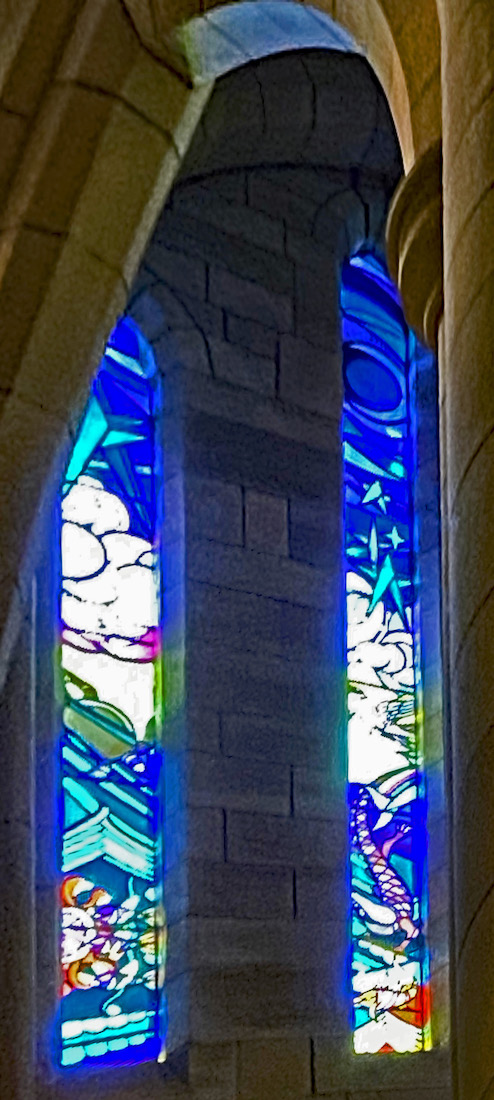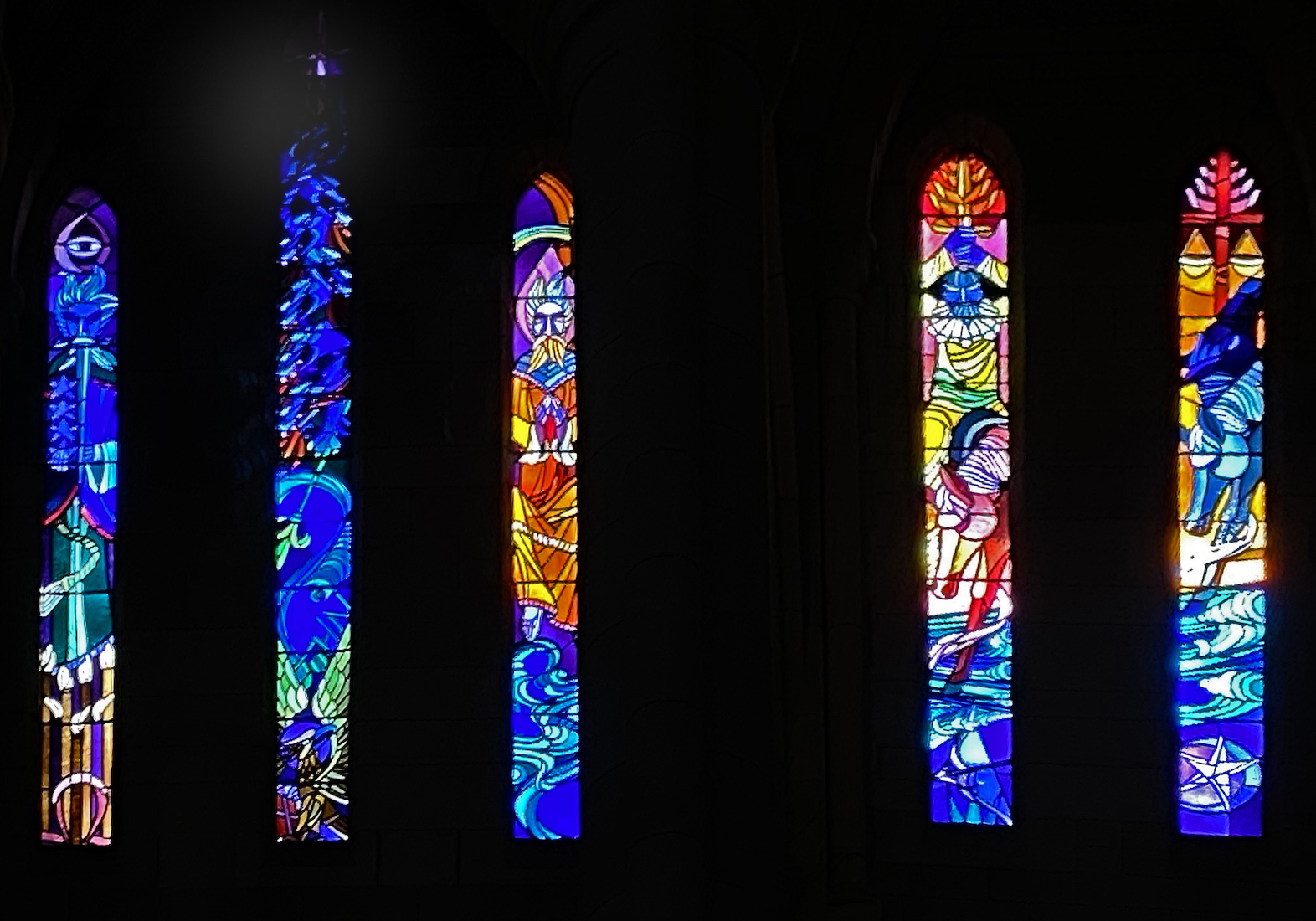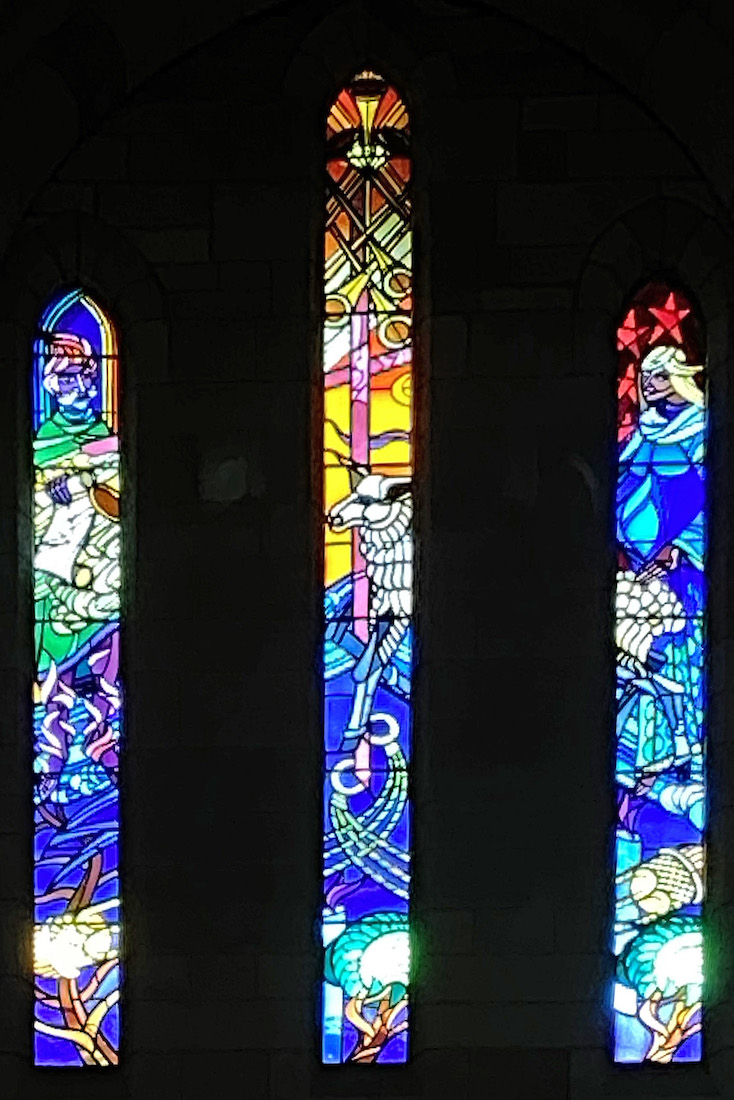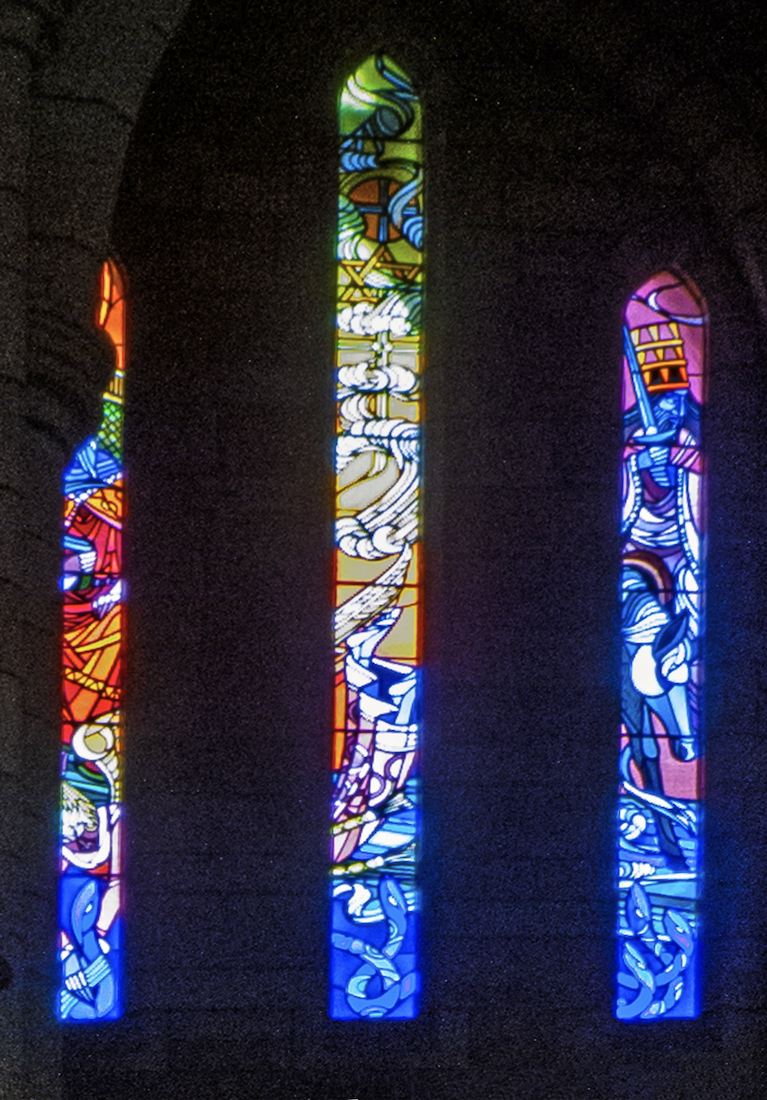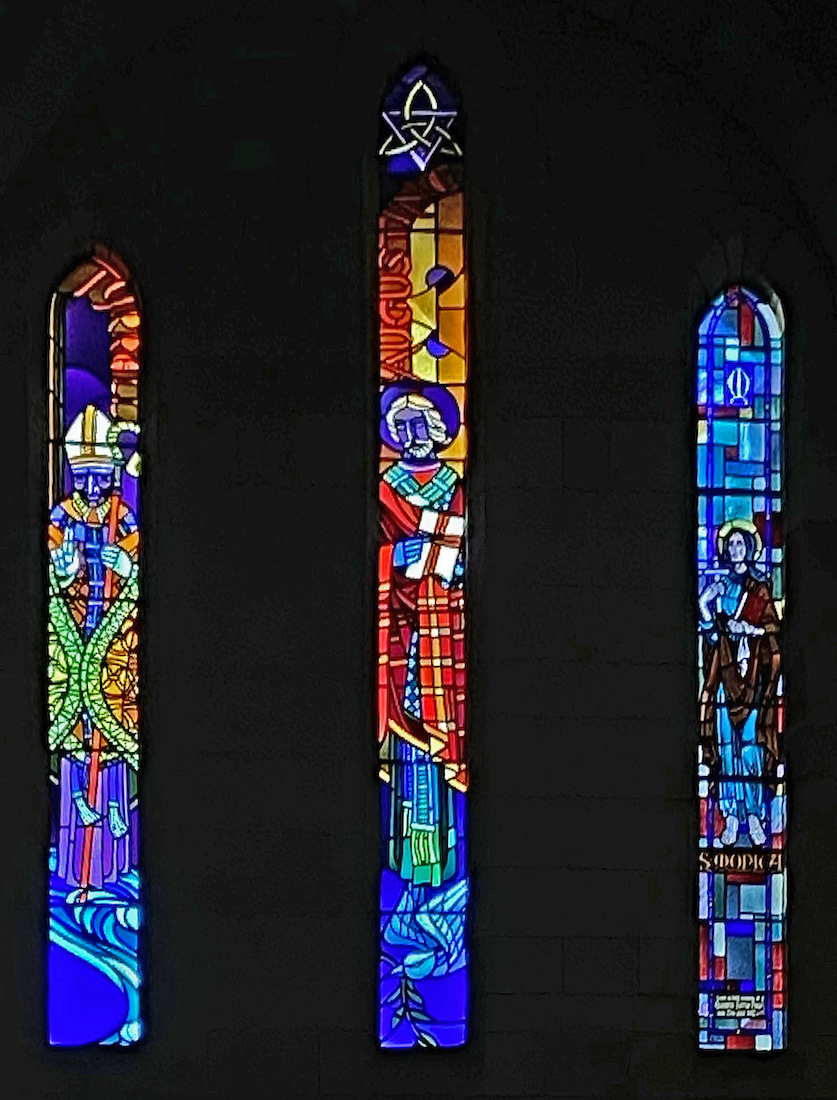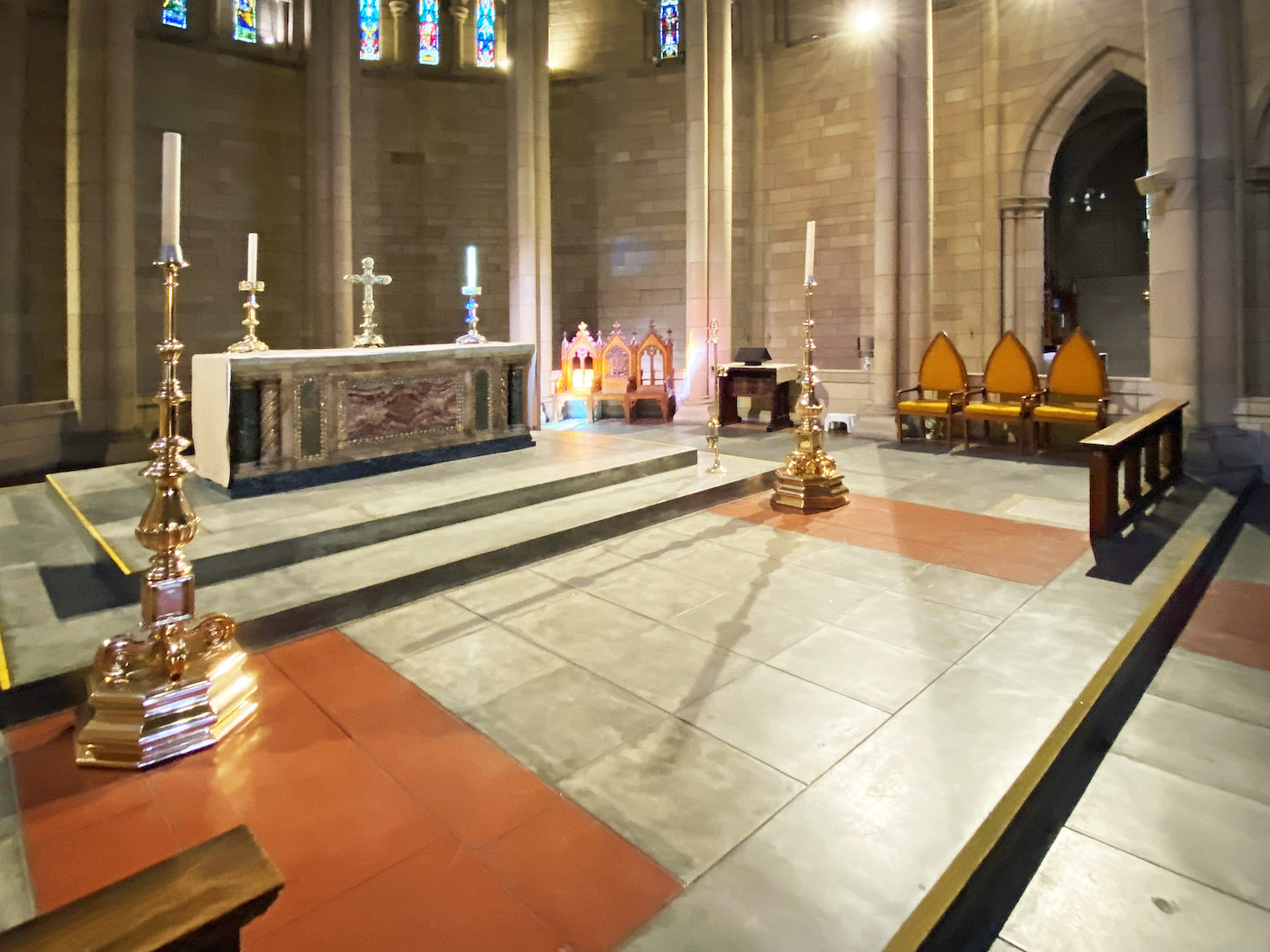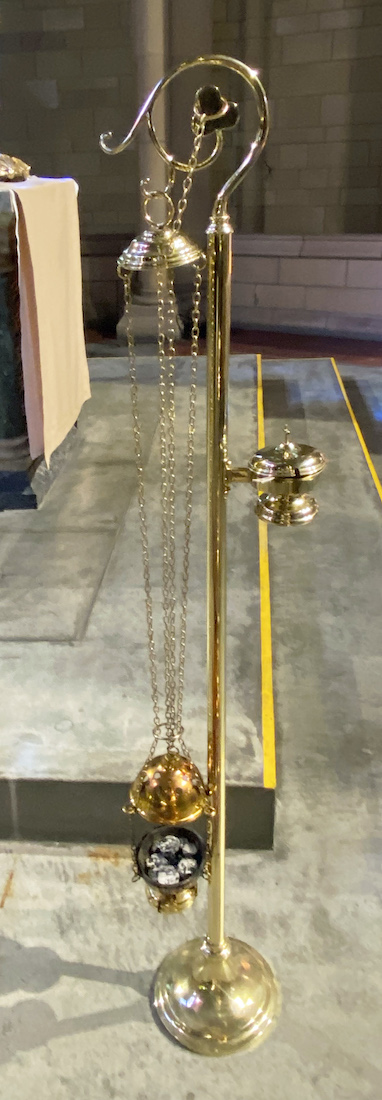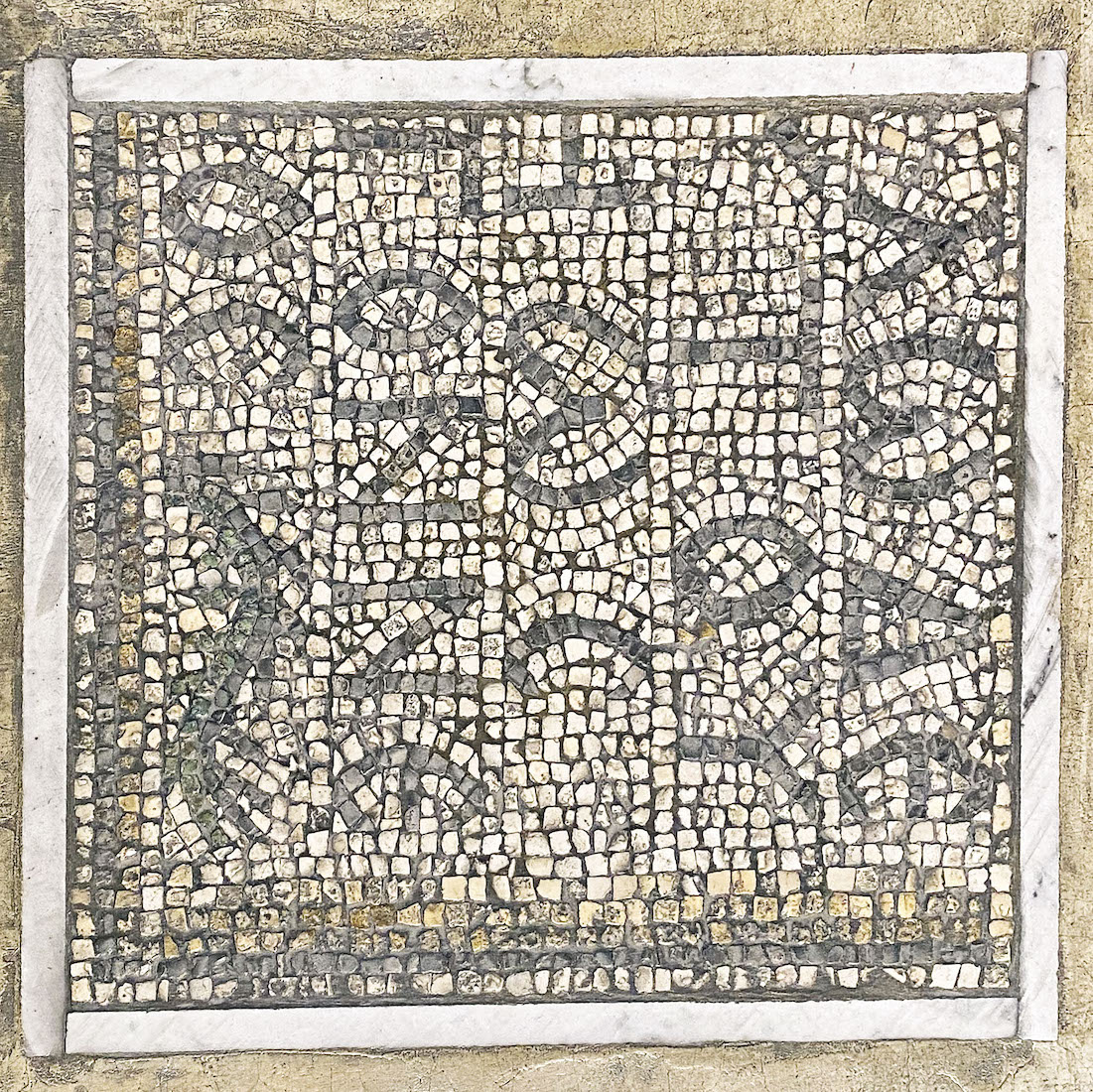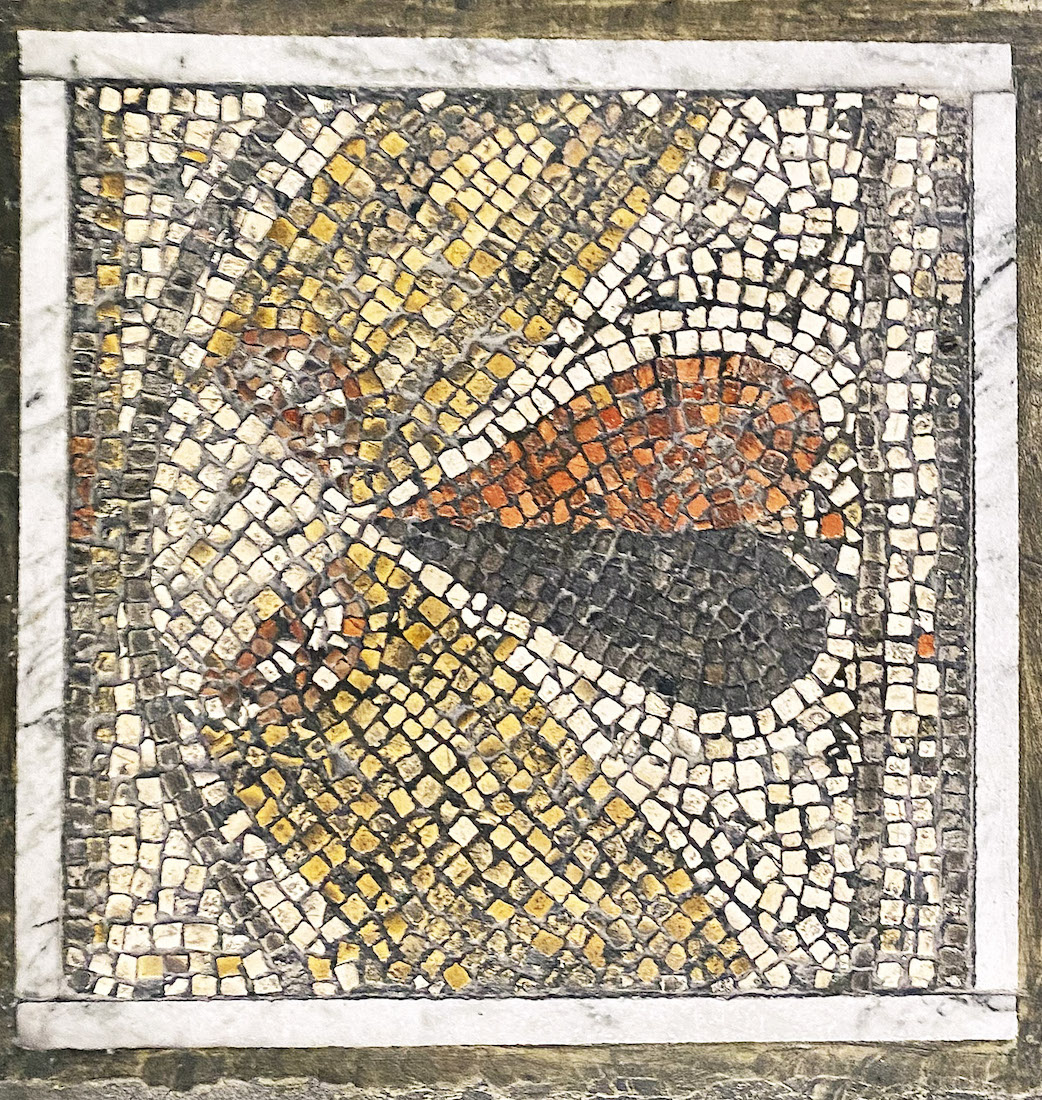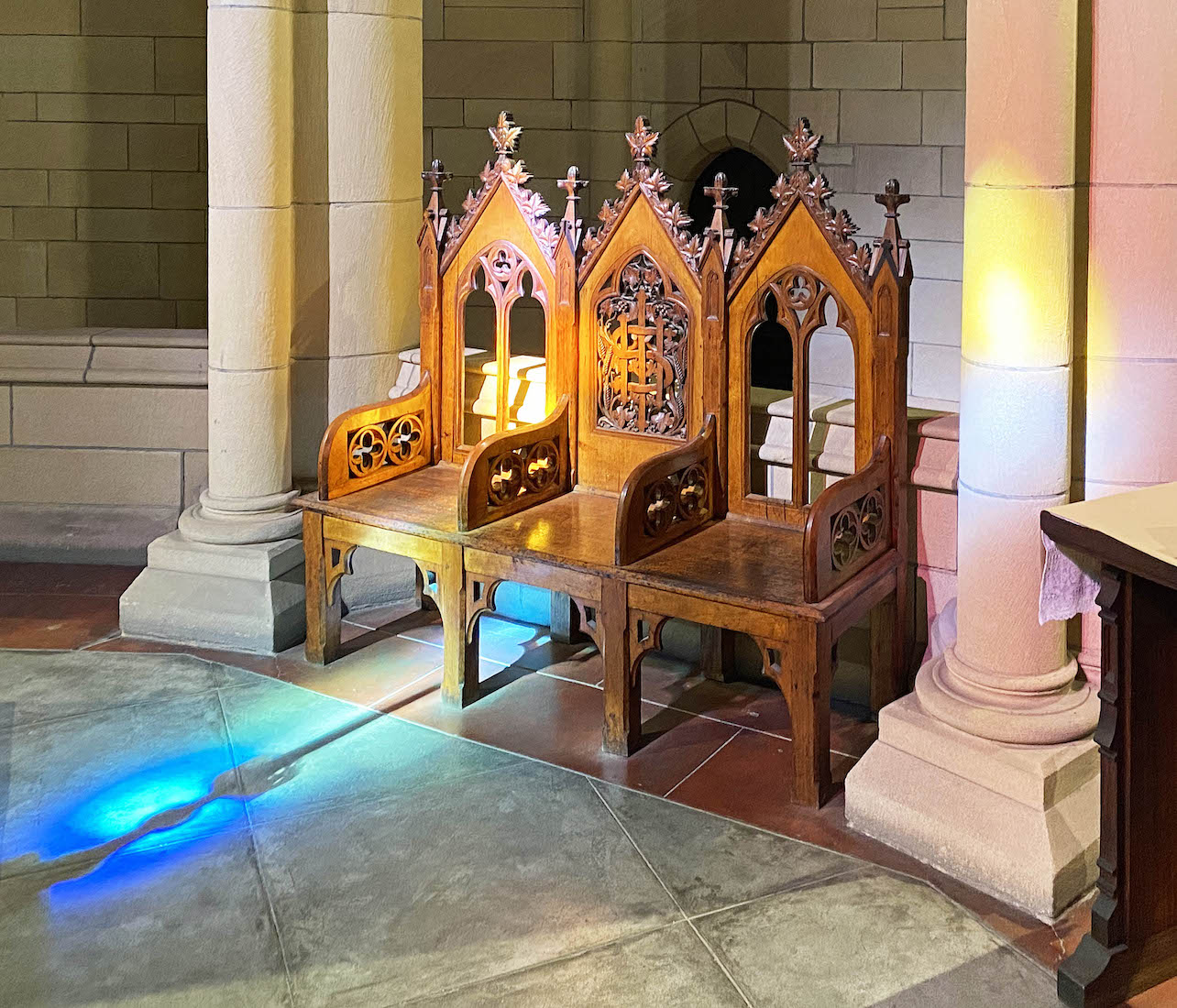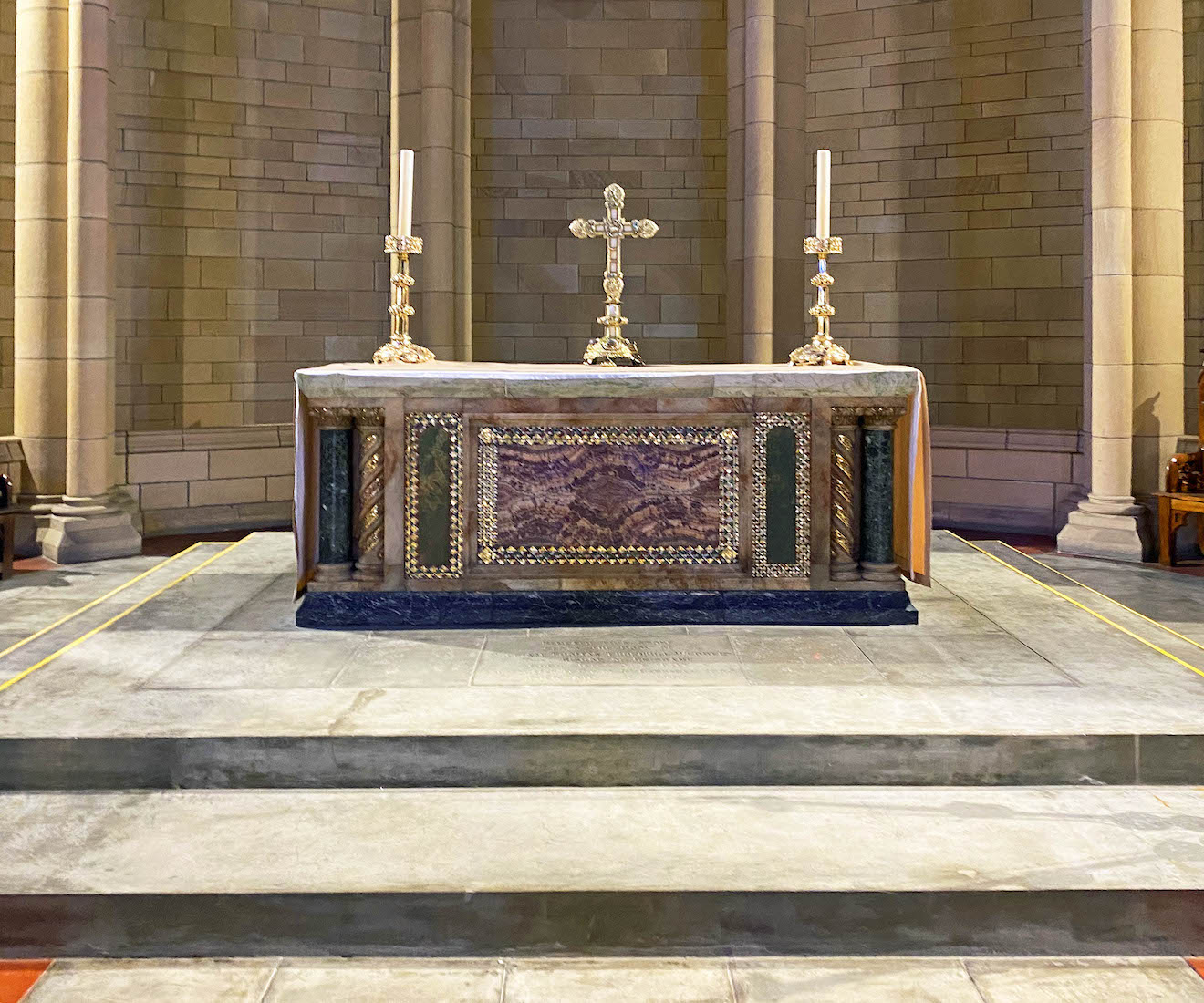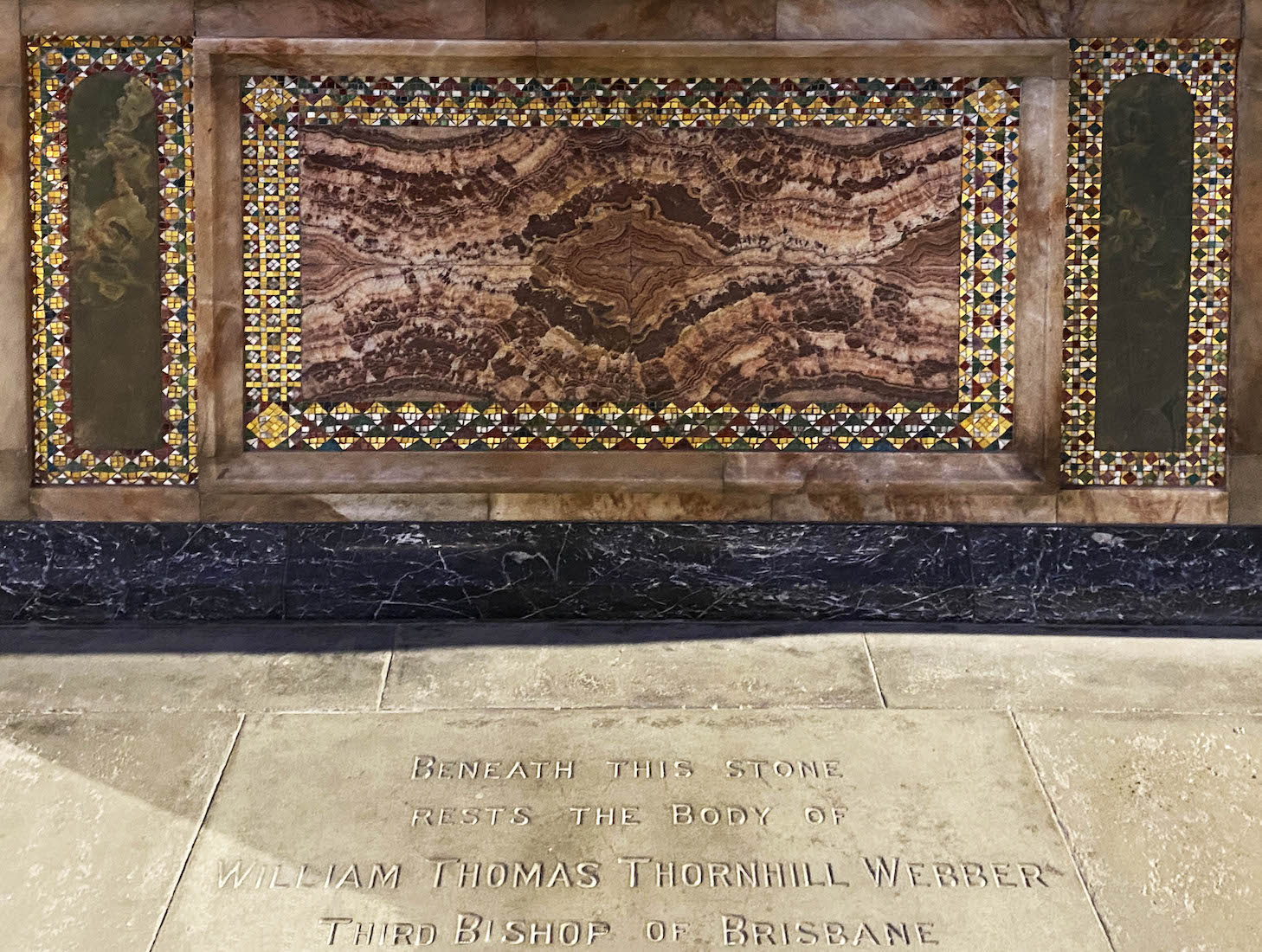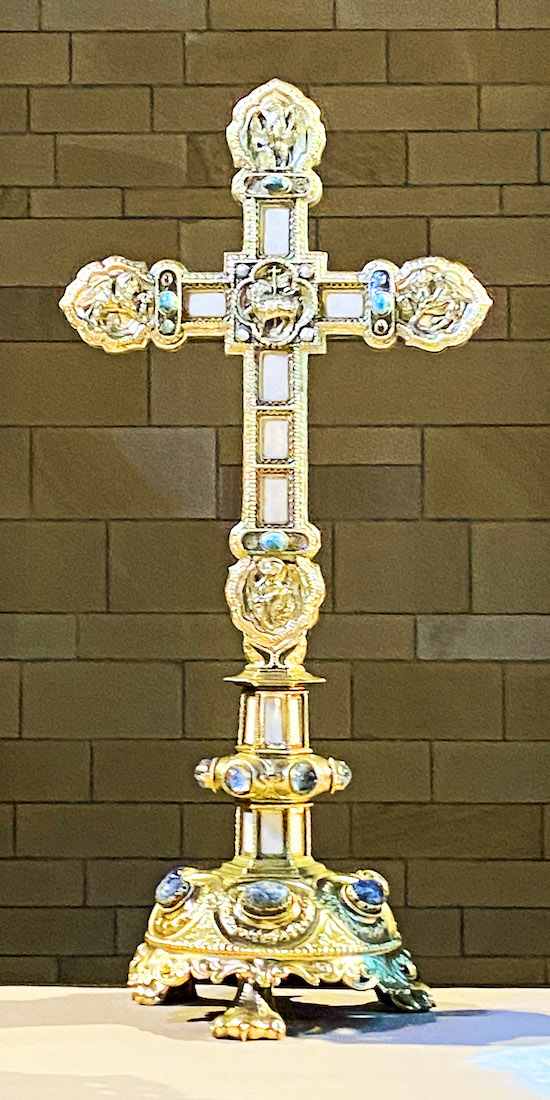101. TO THE SANCTUARY
This brings us to the Eastern apse with the high altar and a blaze of colourful stained glass windows above. We begin by looking at the windows. INDEX
103. APSE WINDOWS II


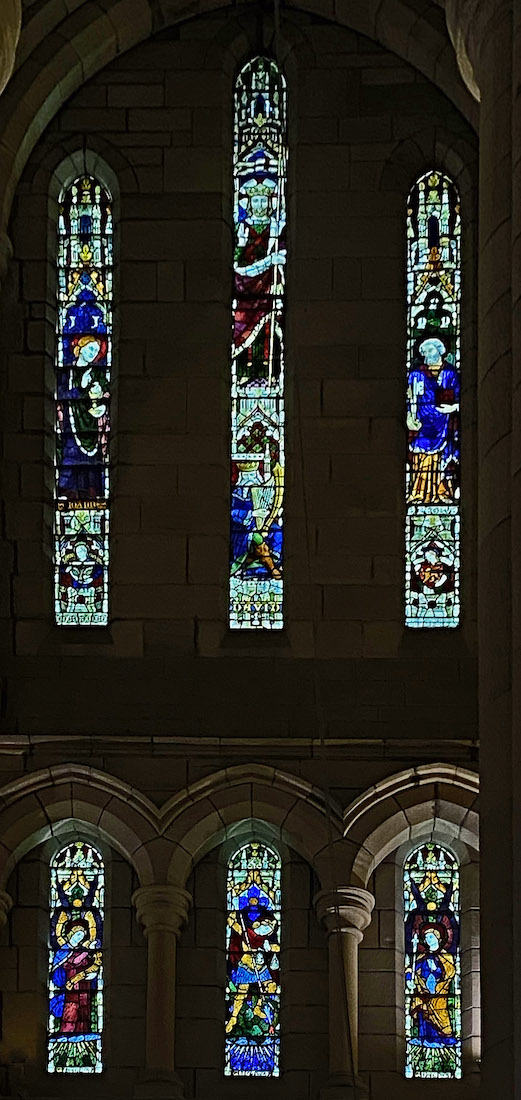
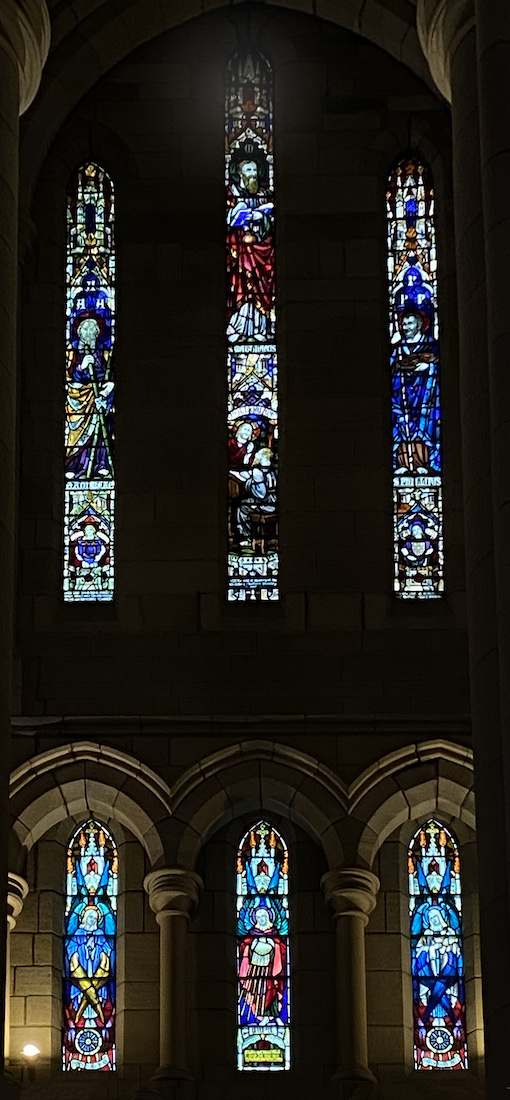

With some difficulty we try to identify the figures illustrated in the large lancets. They are Jesus with his disciples. We label the photos #1 to #5. In #1 (by elimination!) are James the Greater and John. In #2 are St Simon, St Thomas and St James the Lesser. In the central window #3 we see Christ as King with St Paul and St Peter at the sides. In #4 are pictured St Andrew, St Matthew and St Philip. #5 shows St Thaddeus and St Matthias.
104. APSE WINDOWS IV
On the South side of the apse we have the eleven Apocalypse windows, and a window with Bishop Tyrrell, St Augustine nd St Monica – all by David Saunders.
105. SANCTUARY SCENE
We come down from the heights to look at the high altar. In front of the altar are two impressive candlesticks and a little thurible stand. On the far side are some special seats, and then there is the high altar itself.
106. CANDLE AND THURIBLE STAND
Candles have traditionally been important as a source of light: I find it interesting that their use continues today in churches and cathedrals. The thurible is a metal censer suspended from chains, in which incense is burned during worship services.
107. FLOOR MOSAICS
There are two mosaics in the sanctuary floor. The one on the left is the Na Aran Mosaic – a fragment from the floor of a 6th Century synagogue from this village near Jericho. The one on the right comes from a church in Gaza that dates from 560 AD, and is part of the Shellal Mosaics housed in the Canberra War Memorial .
108. SEDILIA
It is common in Cathedrals for there to be three special seats, or sedilia, South of the high altar. These are for the use of the clergy during services, and are often uncomfortable!
109. HIGH ALTAR
The high altar is Byzantine in style. The top is made from marble from St Columba’s holy isle of Iona off the west coast of Scotland.
110. HIGH ALTAR PANEL
The front panel of the altar features contrasting marble and inlaid glass mosaics. In front of the altar is a slab commemorating Bishop Webber, the third Bishop of Brisbane whose inspiration led to the building of St John’s. He was re-interred here in 1910.
111. HIGH ALTAR CROSS
On the high altar is this highly decorated cross with the Agnus Dei – Lamb of God – image at its centre. Although bearing little resemblance to the cruel cross of Calvary, it does remind us of the Saviour who gave his life for all believers.
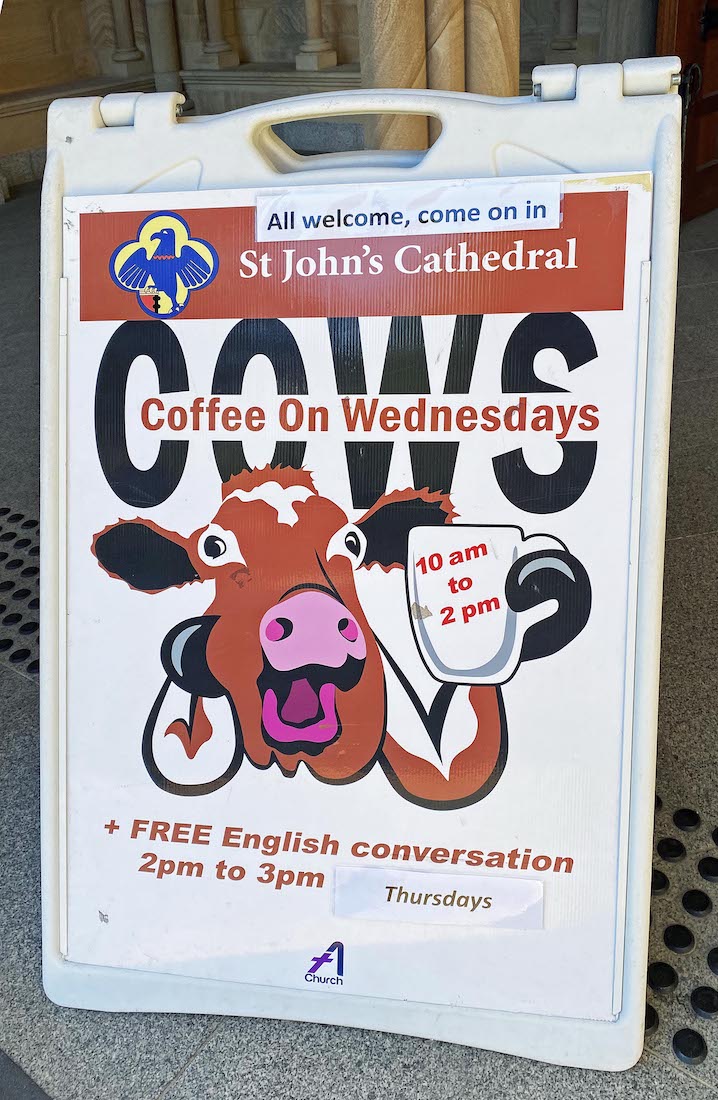
CONCLUSION
From the sublime to the ridiculous! But we did enjoy morning coffee with the people of St John’s on the day of our visit.
I hope you have enjoyed visiting St John’s Cathedral, Brisbane with me. It has given me great pleasure returning here to photograph it again.
I am happy to receive constructive comments or corrections concerning this website. The best websites are the ones which have no errors! I am grateful to my wife Margie who came to Brisbane with me, and who has proof-read these pages.
St John’s Cathedral has a website with link
https://www.stjohnscathedral.com.au
The photographs which appear on this site are all mine, apart from a few exceptions which are acknowledged in the text. The text itself comes from a variety of sources, and in particular from a St John’s pamphlet and booklet.
My photographs which appear on this site can also be found in higher resolution at:
https://www.flickr.com/photos/paulscottinfo/albums/
Site created 07 / 2023
Paul Scott

